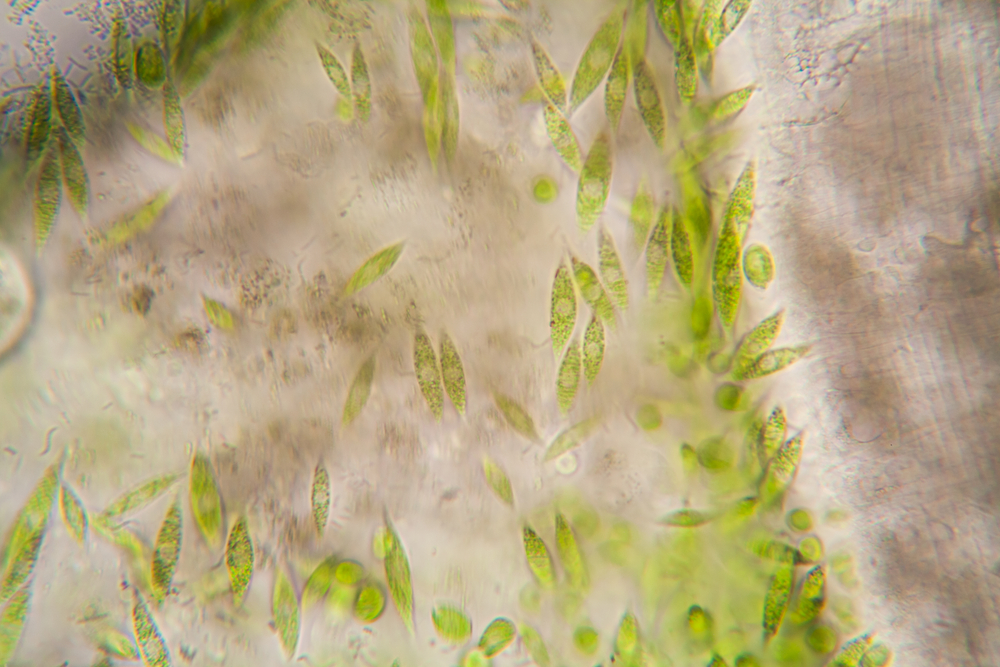Nature is said to be the mother of invention, and this we see in the microscopic single-celled Euglena. Euglenas have chloroplasts – green power packs, making sugars using the energy of light. But they also have an eye, of sorts, enabling them to optimise the light conditions for photosynthesis.

The ‘eye’ of a Euglena
Using a simple ‘eye’ at its front end, a Euglena seeks light. A small red shield or stigma filters light on a light-sensitive spot at the base of a long, whip-like flagellum that lashes the water in changing direction. So, the Euglena eye shows nature’s simple but effective invention.
To everything turn, turn, turn
As the Euglena moves, it continuously turns on its axis. As a result, light falling on the sensitive spot alternately rises and falls as the shield blocks the light—a simple yet creative device, serving a purpose in giving direction to the tiny creature’s movement. The stigma is like a parasol blocking the sun. So, this Eyespot-mediated light perception helps euglena find an environment with optimal light conditions for photosynthesis—a purpose for Euglena’s eye in nature’s invention.

How did Euglena get it’s chloroplasts?
So, where did Euglena get their chloroplasts? A clue comes from an odd arrangement of three membranes surrounding euglena chloroplasts. Organelles (the small organs inside cells) usually have two homemade layers around them. So, where does the third come from?
At some stage in the distant past, the ancestors of euglenas engulfed green algae. As a result, the chloroplasts of this green algae have been living in their host ever since, providing them with ready-made food factories! Now that was evolution! After all, why reinvent the wheel?
Symbiosis and evolution
But there is more. This symbiotic relationship then acted as a selection pressure on the evolution of the Euglena eye. Thus, the factories needed light, and finding light became beneficial.
Nature is abundant with symbiotic relationships – it is the nature of ecosystems. The closer the relationship, the tighter is the interdependency. Euglena is an example of nature’s invention and the way symbiosis played a major role in the direction of evolution.

Ray Noble is a chartered biologist and Fellow of the Royal Society of Biology. He writes extensively on biological theory and philosophy. He was Deputy Dean of Life Sciences at UCL, London, and Graduate Tutor in Women’s Health.

Excellent summary of a complex interaction. The green algae can also turn itself red to prevent photo oxidation.